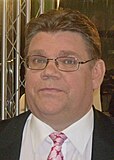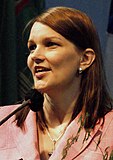Finnish parliamentary election, 2011
|
|
||||||||||||||||||||||||||||||||||||||||||||||||||||||||||||||||||||||||||||||||||||||||||||||||||||||||||||||||||||||||||||||||||
|---|---|---|---|---|---|---|---|---|---|---|---|---|---|---|---|---|---|---|---|---|---|---|---|---|---|---|---|---|---|---|---|---|---|---|---|---|---|---|---|---|---|---|---|---|---|---|---|---|---|---|---|---|---|---|---|---|---|---|---|---|---|---|---|---|---|---|---|---|---|---|---|---|---|---|---|---|---|---|---|---|---|---|---|---|---|---|---|---|---|---|---|---|---|---|---|---|---|---|---|---|---|---|---|---|---|---|---|---|---|---|---|---|---|---|---|---|---|---|---|---|---|---|---|---|---|---|---|---|---|---|
|
||||||||||||||||||||||||||||||||||||||||||||||||||||||||||||||||||||||||||||||||||||||||||||||||||||||||||||||||||||||||||||||||||
|
|
||||||||||||||||||||||||||||||||||||||||||||||||||||||||||||||||||||||||||||||||||||||||||||||||||||||||||||||||||||||||||||||||||
|
All 200 seats to the Parliament 101 seats needed for a majority |
||||||||||||||||||||||||||||||||||||||||||||||||||||||||||||||||||||||||||||||||||||||||||||||||||||||||||||||||||||||||||||||||||
| Turnout | 70.5% | |||||||||||||||||||||||||||||||||||||||||||||||||||||||||||||||||||||||||||||||||||||||||||||||||||||||||||||||||||||||||||||||||
|
||||||||||||||||||||||||||||||||||||||||||||||||||||||||||||||||||||||||||||||||||||||||||||||||||||||||||||||||||||||||||||||||||
|
||||||||||||||||||||||||||||||||||||||||||||||||||||||||||||||||||||||||||||||||||||||||||||||||||||||||||||||||||||||||||||||||||
Jyrki Katainen
National Coalition
Parliamentary elections were held in Finland on 17 April 2011 after the termination of the previous parliamentary term. Advance voting, which included voting by Finnish expatriates, was held between 6 and 12 April with a turnout of 31.2%.
The importance of the election was magnified due to Finland's capacity to influence the European Union's decision in regard to affecting a bailout for Portugal via the European Financial Stability Facility, as part of financial support systems for debt-laden European countries, and the fall of the Portuguese government. Small differences in the opinion polls for the traditional three big parties (the National Coalition Party, the Centre Party and the Social Democratic Party) and the surprising rise in support for the True Finns also electrified the atmosphere ahead of the election.
The election resulted in a breakthrough for the populist True Finns, which came head-to-head with the three big parties, while every other parliamentary party in mainland Finland, excluding Åland, lost popularity. The National Coalition Party (NCP) also ended up as the biggest party for the first time in its history. The total turnout rose to 70.5% from 67.9% in the previous election; and corruption scandals also resulted in an anti-incumbency vote. The incumbent, Centre Party-led coalition, which included the NCP, Green League and Swedish People's Party (SPP), lost its majority by two seats and their Prime Minister Mari Kiviniemi of the Centre Party signaled that her party would then sit in opposition.
...
Wikipedia








